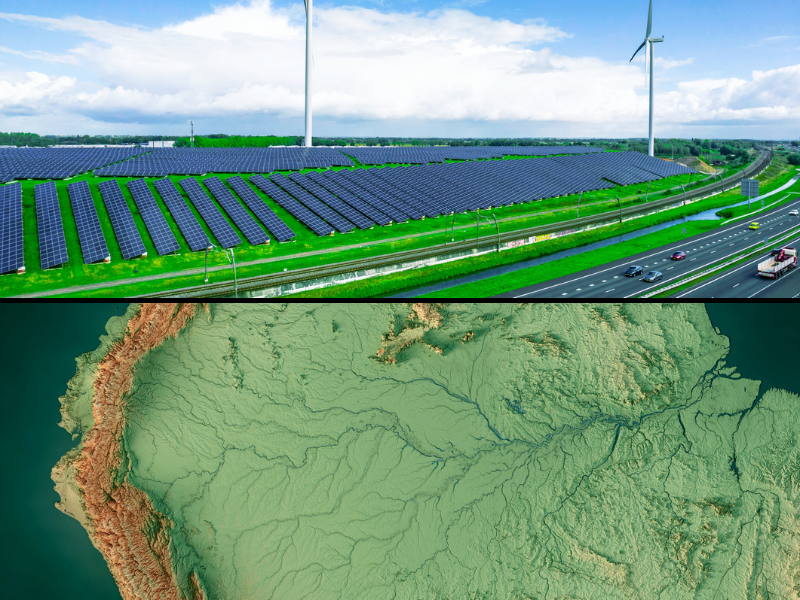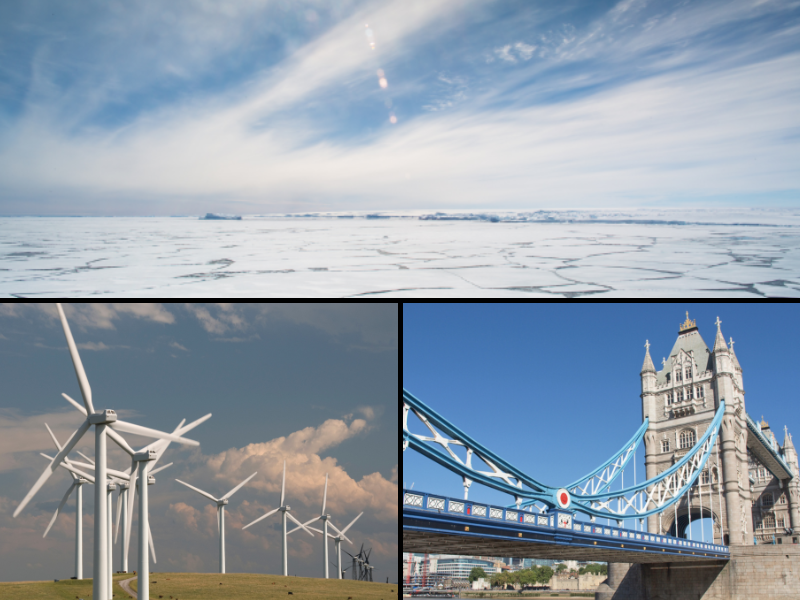Review of Landscapes and Cycles: An Environmentalist’s Journey to Climate Skepticism, by Jim Steele; self-published, June 2013, 331 pages; ISBN: 1490 390189, ISBN-13: 978-1490 390185; $22.49 on Amazon
In Landscapes and Cycles, biologist and ecologist Jim Steele has produced a stunning exposé of the way scientists, wedded to the idea human-caused carbon-dioxide emissions are changing the environment in dangerous ways, operate to the detriment of the scientific process and the environment they claim to care about.
Steele served as director, and is now director emeritus, of the Sierra Nevada field campus of San Francisco State University for 25 years. In this role and as a practicing research biologist, Steele has done his own field work and reviewed in detail the field work of dozens of biologists battling to conserve and protect species at risk of local and global extinction. In the course of his work, Steel worried legitimate concern for various species’ status was being hijacked by scientists who wanted to link every species decline (even temporary or localized losses) to global warming.
Habitat Change, Not Climate Change
This diversion of attention is a problem because when climate scaremongers misidentify the causes of a particular species’ decline, they divert scarce resources from research into the true problem, thus reducing the chances of finding a successful solution.
Steel skillfully dissects several factors that have led climate scientists down blind paths from which they refuse to extricate themselves. The book is at its strongest, however, when Steele uses copious amounts of accumulating evidence to demonstrate local landscape changes or direct human intervention provide far more accurate and compelling explanations for species decline and, when occurring, recovery, than do rising carbon-dioxide levels. This proves true in almost every instance of a threat to a species.
In case study after case study, Steel shows the threats faced by species as disparate as polar bears and butterflies, walruses and pika, whales and frogs, inhabiting wildly varying habitats from the polar reaches to tropical jungles and high mountain deserts to the vast ocean, are caused almost exclusively by localized landscape changes or natural regional and global climate patterns, having nothing to do with anthropogenic greenhouse gas emissions.
Penguin Predictions
For example, between 2004 and 2009 the emperor penguin population was estimated at approximately 220,000 individuals, and the International Union for the Conservation of Nature (IUCN), listed them as a species of “Least Concern.” By 2012, though the population had tripled to more than 600,000 penguins, the IUCN changed the species’ status from “Least Concern” to “Near Threatened.”
This shift was not based on actual emperor penguin numbers, but instead on a single study using data from the 1970s examining a single penguin colony in an area of a localized, temporary temperature spike. The study postulated global warming will reduce the sea ice emperor penguins need to survive. Headlines around the world trumpeted the impending doom of the iconic emperor penguin (star of the movie March of the Penguins).
Every single part of the explanation was contradicted by the facts. Antarctic sea ice has expanded dramatically despite rising carbon-dioxide levels. Luckily for the penguins, it hasn’t expanded near their preferred breeding sites, since the latest research shows emperors benefit from more open water near their colonies.
Damage by Human Intervention
More recent fluctuations in the DuDu colony of emperor penguins and neighboring Adelie penguins in a French-controlled region of Antarctica, despite a couple of prominent science journals and the press blaming them on climate change, have been shown by on-the-ground observations and measurements far more likely to be due to direct human interference with penguins in their habitat.
In studying the emperors from the late 1960s to the ’80s, scientists stalked and trapped them on their breeding grounds, at a time when penguins are already highly stressed, and attached flipper bands. Some emperors migrated to other breeding grounds in future years, but others died because the bands were attached too tightly and caused the flippers to atrophy. By one estimate, flipper bands lowered survival by 13 percent annually. Even when the bands didn’t kill the penguins outright, the increased drag on the swimming penguins was observed to lower their hunting efficiency, sending them into the harsh winter in less-than-peak condition.
When flipper banding was ended in the 1980, the emperor penguin survival rates and overall population numbers rebounded dramatically.
Thousands of Nests Destroyed Adelaie penguins in DuDu faired less well. Though, like their emperor cousins, Adeliae numbers declined sharply in the years scientists attached flipper bands and recovered quickly after banding was halted, they have yet to recover from more invasive human actions.
Scientist studying penguins wanted easier access to their research station, thus despite protests from Greenpeace and host of other conservation organizations and scientists, an airstrip was constructed in the middle of one the Adelaie colony’s nesting grounds, destroying more than 3,000 nests in the process. The construction, using dynamite and heavy machinery, drove away both emperor and Adeliae penguins.
In an ironic twist, an iceberg later destroyed the airstrip. emperor penguins have since returned to the breeding grounds, but the Adeliae have not.
This is just one of the many examples Steel provides showing sound research, ignored by the press, shows local conditions, not global average temperature, is the cause of species decline, population movement, and recovery or repopulation.
H. Sterling Burnett, Ph.D. ([email protected]) is managing editor of Environment & Climate News.





